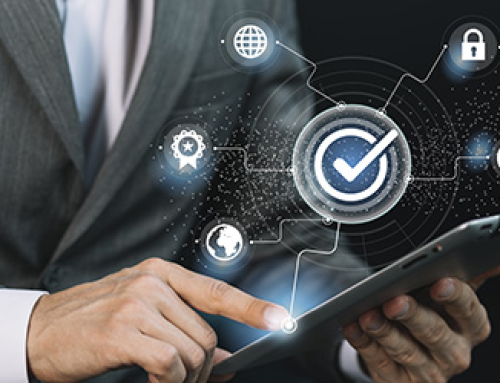Why you should be re-evaluating your security for remote working
Why remote working brings some extra security risks and how the right software can help
Where, when and how we work has changed. While many Australians were working remotely before COVID-19, we’ve now seen a fundamental workplace shift in preferences and behaviour, with employees expecting more flexibility than ever before. In fact, in a recent study, 74% of Australian workers said they wanted flexible ways of working to continue.[i]
As a result, organisations are having to re-think how they support their people, and 66% of businesses are currently looking at re-designing their office spaces to accommodate hybrid work practices.[ii]
While the shift to remote working has countless benefits, including the potential for better work-life balance and enhanced productivity, it’s also considerably heightened risks with regards to security.
[i] PWC, Digital Pulse, Report: Future of hybrid working, [online], https://www.pwc.com.au/digitalpulse/report-future-of-work-hybrid-working.html
[ii] PWC, Digital Pulse, Report: Future of hybrid working, [online], https://www.pwc.com.au/digitalpulse/report-future-of-work-hybrid-working.html
Why remote working is riskier
There are several reasons why allowing employees to work remotely puts an organisation at greater risk of cyber-attack:
Increased threat landscape
The volume and sophistication of cyber-attacks has skyrocketed globally during the pandemic, and Australian workers are not immune. During 2021, the Australian Cyber Security Centre (ACSC) received one cyber-crime report every eight minutes.[i] Similarly, over half (56%) of Australians in a recent survey said they were hit by targeted phishing emails, phone calls, or texts in a personal or professional capacity during the first six months of remote work.[ii]
Less secure connections
When a person accesses the internet via their work device, from within their office, they are typically protected by a robust firewall as part of the network security precautions the IT team has put in place. When the same person is working remotely – potentially on their personal device – many of these security protections simply aren’t available, meaning there are far more opportunities for cyber-criminals to attack.
Dated or insufficient software
In some cases, business owners simply assume their IT is sufficient with regards to security, and don’t realise that they need to take proactive steps towards protecting their valuable data. Conversely, in many businesses, there’s an awareness of the need to improve, but a lack of understanding about what technology they need – or where to start. In a recent survey, 80% of senior IT and security leaders said they felt their business lacked sufficient protection against cyber-attack.[iii]
Employee behaviour
There’s also plenty of evidence to suggest that remote working employees are more likely to take risks with regards to their security when working from home. This could include, for instance, opening a suspicious email without caution, or storing their work-related passwords in the browser on their personal device, for ease of access. Similarly, when working from home, some employees are more likely to share passwords and accounts with other people as a way to accomplish certain tasks more quickly. In a recent survey, 26% of Australians admitted that they’ve shared work passwords with a third party, such as partners, roommates, and friends.[iv]
Not having the right partner, or the right advice
In times of change – and heightened risk – it’s important that businesses have a technology partner they can count on. However, many businesses simply don’t have a reliable partner that can provide the level of insight and technical assistance they need.
[i] Reuters, Australia sees 13% rise in cyber-crime, [online], https://www.reuters.com/technology/australia-sees-13-rise-cyber-crime-reports-covid-19-pushes-more-people-online-2021-09-15/
[ii] Tech Republic, How remote working poses security risks for your organisation, [online], https://www.techrepublic.com/article/how-remote-working-poses-security-risks-for-your-organization/
[iii] TechRepublic, 80% of senior IT leaders see cybersecurity protection deficits, [online], https://www.techrepublic.com/article/80-of-senior-it-leaders-see-cybersecurity-protection-deficits/
[iv] Tech Republic, How remote working poses security risks for your organisation, [online], https://www.techrepublic.com/article/how-remote-working-poses-security-risks-for-your-organization/
How implementing Microsoft 365 can help
Microsoft 365 Business Premium is a great way to instantly boost your business’ productivity and security. It enables your people to chat, share files, and work together – with the confidence they’re protected by premium security features. It also:
- Protects your work from unauthorised access – thanks to advanced multi-factor authentication and conditional access policies.
- Defends against phishing and ransomware with real-time, AI-powered malware scanning and anti-spoofing technologies.
- Safeguards sensitive data against breaches and accidental loss
- Secures your work data on personal devices – with mobile app protection and remote wiping capabilities.
Is your security up to scratch? Here’s how to find out
At mcrIT, we help businesses of all sizes with their security and day-to-day productivity. The first step is to conduct a free audit, where we take an in-depth look at your current security and software to identify where the gaps are. As part of this audit, we will examine your accounts and devices, the type of identity and information protection you have in place, your email protection, and much more.
Once we have determined where your security risks lie, we can then work with you to implement the solution that’s right for your business – ensuring all-important peace of mind.
If you’re interested in finding out more about this audit, please get in touch.






